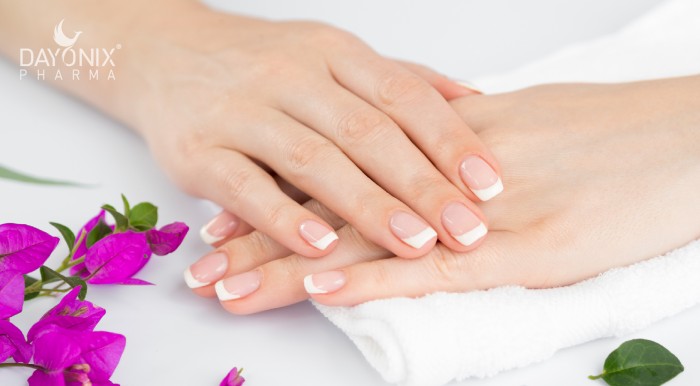
Manicure healthy nails with iron!
March 2, 2020Nails, covering the tip of fingers and toes are small yet a very important part of our body. Not only they have a key role in scratching, grabbing, picking and cutting, healthy nails are also considered as a mirror of our internal health.
Nail anatomy consists of different parts including nail plate, matrix, bed and folds. Nails can help with the diagnosis of many cutaneous and systemic diseases. So it is important to know how a normal nail looks like and when to be worried.
Nails have important functions such as:
- Protection of fingertips and distal toes by covering them
- Increasing the ability to differentiate information through the sense of touch
- Make finger functions delicate
- Toenails contribute to pedal biomechanics
- Various aesthetic functions, scratching, grabbing
How do healthy nails look like?
- They are pinkish
Healthy nails reflect the colour of the nail bed underneath, which is red. So it will reflect a pinky hue. White, yellow, brown any other colours appearing are not normal and need to be checked by a doctor.
- They are no stains on it
If you see any black or brown spot or line on your nail or under it consider it as a not normal nail. This symptom should be checked by a doctor as soon as possible.
- They are symmetric in shape, size and thickness in both hands and toes.
- Healthy nail folds are not swollen, red, painful
- Normal nails do not crack easily, and do not have any grooves on them.
- Normal healthy nails are not curved.
Curved nails are not normal. There are different causes for curved nails depending on it being downward or upward. For example, downward curves are called clubbing, which may be a sign of chronic obstructive pulmonary disease (COPD) or sometimes lung cancer. This is one of the examples why nails are reflecting your internal health. If your nails have an upward curve called spooning, there is a good chance you may have iron deficiency anaemia.
What can we do to keep our nails healthy?
- Moisturise your nails
Moisturising your hands and feet every day, to make sure your skin, nail folds and cuticles are not dry. Dry skin will lead to cracked skin and cuticles, which may put your nails in risk of unhealthy situations like infections.
- Don’t cut your nails too short
Cutting your nails too short will result in bacterial and fungal infection which are against healthy nails, plus increasing the risk of having permanent shortening of nails.
- Let your nails free once in a while
Using nail polishes for long periods of time may be beautiful but harms your nails. Most of them have toxic ingredients which can enter your blood stream via the nail bed, leading to systemic irregularities. Besides one may have a hypersensitivity condition being activated by nail polishes.
- Do not push your nails cuticle back
Cuticle around your nails is actually the skin protecting your nails from inflammation, trauma and infections. It supports healthy nail growth and also stops the bacteria and fungus from entering your nail bed and matrix.
- Do not wear tight pointed toe shoes
By putting your toes in to pressure, you traumatise your nails. Pressure on nails may lead to inflammation, deformation, discoloration and breaking of the nails.
- Do not bite, tear or suck on your nails
- Eat healthy, drink plenty of water
Having a healthy life style leads to having a healthy body. Eating more vegetables, grains, legumes and less meat is the key to be hale and hearty. Your nails, as mentioned before can reflect your nutritional status. Iron deficiency is a common problem in most communities. By supplementing yourself and your loved ones with an easy to digest iron supplement, you can fight iron deficiency anaemia and ensure beautifully manicured nails to them.
Keywords : anemia, health, iron deficiency, iron supplement, nail